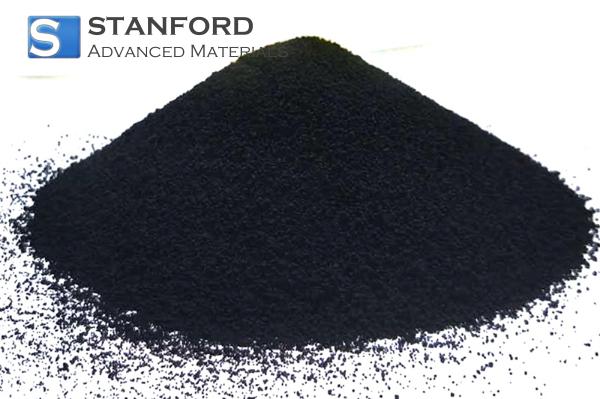Young's Modulus: An Overview
What is Young's Modulus
Young's modulus, also known as the elastic modulus, is a fundamental property that indicates a material's stiffness. It is defined as the ratio of stress (force per unit area) to strain (proportional deformation) within the linear‐elastic region of a material’s stress–strain curve. A higher elastic modulus signifies a stiffer material that exhibits less deformation under applied stress.
The Stress–Strain Curve
The stress–strain curve is a graphical representation of a material’s response to applied stress. It typically comprises several regions:
- Elastic region: The initial linear region in which the material recovers its original shape following the removal of stress.
- Yield point: The stress level at which permanent deformation begins.
- Plastic region: Beyond the yield point, the material undergoes permanent deformation.
- Fracture point: The point at which the material fails.
Young's modulus is determined by the slope of the stress–strain curve in the elastic region.
Factors Influencing the Elastic Modulus
Several factors affect the elastic modulus, including:
- Material composition: Different materials possess inherent stiffness properties.
- Temperature: An increase in temperature generally reduces the elastic modulus.
- Microstructure: Grain size and phase distribution affect material stiffness.
- Impurities and defects: Their presence can diminish the elastic modulus.
Applications of the Elastic Modulus
Understanding the elastic modulus is essential for various engineering and scientific applications, such as:
- Civil engineering: The design of buildings and bridges to ensure they sustain loads without excessive deformation.
- Materials science: The development of new materials with specified stiffness properties.
- Mechanical engineering: The analysis of the behaviour of mechanical components under load.
Elastic Modulus, Tensile Strength and Yield Strength in Various Materials
|
Material |
Elastic Modulus (GPa) |
Tensile Strength (MPa) |
Yield Strength (MPa) |
|
Steel (unalloyed) |
200 - 210 |
250 - 550 |
250 - 350 |
|
Carbon Steel |
200 - 210 |
400 - 1 200 |
250 - 800 |
|
Stainless Steel |
190 - 210 |
500 - 1 500 |
200 - 1 000 |
|
110 - 120 |
500 - 1 400 |
300 - 900 |
|
|
69 |
90 - 570 |
40 - 550 |
|
|
Copper |
110 |
210 - 400 |
70 - 250 |
|
Brass |
95 |
200 - 550 |
150 - 300 |
|
Bronze |
100 - 120 |
300 - 800 |
150 - 450 |
|
Magnesium |
45 - 50 |
150 - 350 |
50 - 250 |
|
Cast Iron |
100 - 200 |
150 - 500 |
100 - 300 |
|
Concrete |
20 - 30 |
2 - 5 |
10 - 30 |
|
Wood |
9 - 16 |
30 - 150 |
20 - 100 |
|
Rubber |
0.01 - 0.1 |
20 - 30 |
10 - 15 |
|
230 - 500 |
3 500 - 6 000 |
2 000 - 3 500 |
|
|
Polyethylene |
0.2 - 0.8 |
20 - 40 |
10 - 30 |
|
100 - 400 |
200 - 700 |
100 - 300 |
Further information is available at Stanford Advanced Materials (SAM).
Frequently Asked Questions
What does a high elastic modulus indicate?
A high elastic modulus indicates that a material is stiff and exhibits minimal deformation when subjected to load.
How is the elastic modulus measured?
The elastic modulus is determined by applying a known stress to a material, measuring the resulting strain, and then calculating the ratio of stress to strain within the elastic region.
Can the elastic modulus change over time?
Yes, factors such as temperature, ageing and material fatigue can cause variations in the elastic modulus over time.
Is the elastic modulus the same for all types of materials?
No, the elastic modulus varies considerably between different materials and reflects their inherent stiffness properties.
Why is the elastic modulus important in engineering?
The elastic modulus is used to predict material behaviour under load, thereby ensuring that structures and components are designed safely and effectively.

 Bars
Bars
 Beads & Spheres
Beads & Spheres
 Bolts & Nuts
Bolts & Nuts
 Crucibles
Crucibles
 Discs
Discs
 Fibers & Fabrics
Fibers & Fabrics
 Films
Films
 Flake
Flake
 Foams
Foams
 Foil
Foil
 Granules
Granules
 Honeycombs
Honeycombs
 Ink
Ink
 Laminate
Laminate
 Lumps
Lumps
 Meshes
Meshes
 Metallised Film
Metallised Film
 Plate
Plate
 Powders
Powders
 Rod
Rod
 Sheets
Sheets
 Single Crystals
Single Crystals
 Sputtering Target
Sputtering Target
 Tubes
Tubes
 Washer
Washer
 Wires
Wires
 Converters & Calculators
Converters & Calculators
 Write for Us
Write for Us





 Chin Trento
Chin Trento



